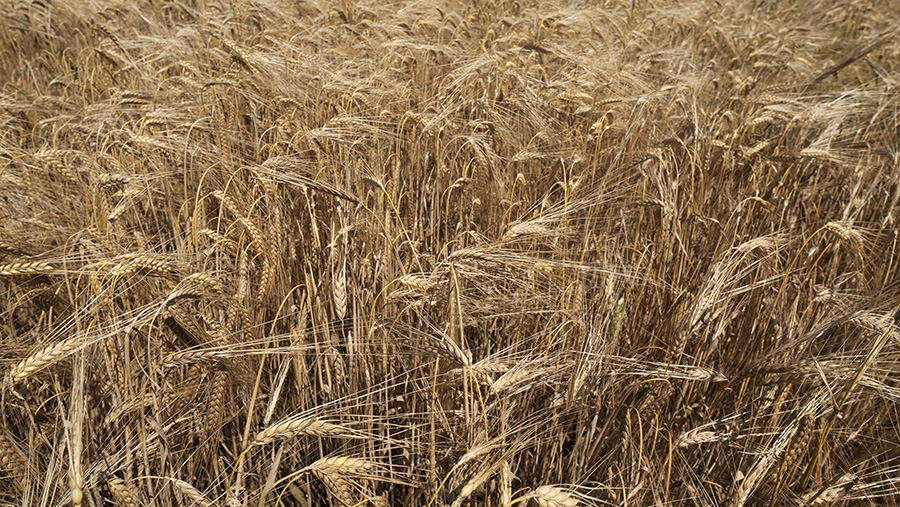Winter barley varieties get new disease rating
 © Helmut Meyer zur-Capellen/imageBROKER/REX/Shutterstock
© Helmut Meyer zur-Capellen/imageBROKER/REX/Shutterstock Variety resistance ratings for a key barley disease have been published for the first time for winter varieties, to help growers avoid yield losses.
Ramularia is a late-season disease of barley, which has become more prevalent in the South and can cut yields sharply in bad years which, in spring barley, can be up to 0.6t/ha.
See also: Ramularia early warning scheme to reach all UK barley growers in 2016
Jenna Watts, AHDB research manager, said: “Ramularia is relatively common in northern Britain, but it is also becoming much more common in southern Britain, on both winter and spring barley.”
Resistance ratings are already published for spring varieties and this has now been extended to winter barley to aid their variety selection.
“We have now gathered several years’ worth of data allowing us to produce robust ramularia resistance ratings for winter barley for the first time,” she explained.
Variety selection
Dr Watts continued: “Growers producing winter barley in higher-risk situations should consider drilling varieties with a higher ramularia rating.
“Ramularia is relatively common in northern Britain, but it is also becoming much more common in southern Britain, on both winter and spring barley”
Jenna Watts, AHDB
“This will provide useful insurance for the crop as part of an integrated approach to tackling the disease. At present, the highest rating is 6.”
Ramularia disease ratings tend to be higher for spring barley varieties, particularly feed varieties with ratings as high as 8.
Chemical control
As there are no fully resistant varieties, for both spring and winter barley crops, control frequently requires the use of fungicides.
A number of active ingredients are available which provide good protectant activity.
New AHDB Recommended List ramularia resistance ratings for winter barley |
|||
|
Variety |
Ramularia rating (1-9) |
Variety |
Ramularia rating (1-9) |
|
Bazooka |
5 |
Infinity |
4 |
|
Belfry |
5 |
Orwell |
6 |
|
California |
6 |
Tower |
5 |
|
Cassata |
5 |
Matros |
6 |
|
Cavalier |
4 |
Pearl |
5 |
|
Craft |
5 |
Retriever |
4 |
|
Flagon |
4 |
Surge |
5 |
|
Florentine |
4 |
Venture |
6 |
|
Cassia |
5 |
Talisman |
4 |
|
Glacier |
5 |
Volume |
6 |
The most effective control is achieved from a preventative fungicide application, before symptoms appear, at booting (GS45–49).
The vast majority of symptoms appear in the crop post flowering. However, at this point in crop development treatments are ineffective.
Although ramularia is seed-borne, seed treatments do not control the disease effectively.
Growers are being urged to check crops for symptoms late in the season and to avoid saving seed for resowing from infected crops.
